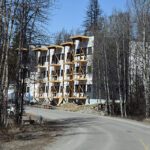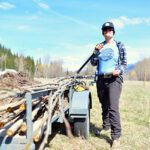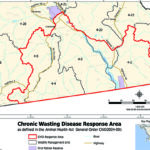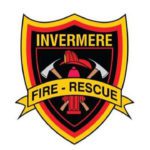Home »

Long-term health of big game needs addressing
Letter to the Editor
Stopping the grizzly bear hunt in British Columbia wasn’t and isn’t science based management.
Now if you want to harvest a grizzly bear you have to be a Conservation Officer it seems.
What does the government do with the bear meat? What do they do with the claws, the galls, the skull and the hides? Do they shoot them with 22 rim fires when trapped in culvert type traps? How many problem bears do they relocate?
Predators such as black bears and grizzly bears, cougars, wolves, coyotes need control management, based on the best available scientific information to protect people and other big game.
Grizzly bears, black bears, coyotes, cougars and wolves need to be managed to minimize adverse impacts on other big game and people, also to minimize conflicts with the farming, ranching, and fruit farming businesses and to ensure British Columbia’s hunters fishers, trappers and outfitters continue to have healthy big game populations for hunting, fishing, trapping, guiding and viewing.
Proper big game management will also ensure that we continue to have predators, not eliminate them.
Proper big game management means that we need to feed ungulates during tough winters. We presently feed predators 24/365 with local roadkill, left at predator pit feed sites along B.C.’s highways; there are numerous sites here in the Kootenays. Road killed deer and elk can be frozen in local reefer trucks, transported into the backcountry via heli-nets, dumped into high elevation deep snow to feed wolverine, fishers and pine marten. Hibernating bears would find the sites come spring. keeping some bears out of the valley bottom calving zones. The members of the weasel family would find and camp on high country winter smorgasbord sites… because weasel females have delayed pregnancy implantation, based mainly on food, food, food supply, their fecundity levels would increase, ensuring that more baby wolverine, fishers, ermine and pine marten are produced annually. These members of the weasel family are all carrion eaters.
Extract a tooth from the road killed elk, deer and moose for aging and for scientific ungulate management information as well.
Salting and baiting, through established valley bottom winter feeding sites for deer, elk and bighorn sheep would keep most them away from highway and railroad traffic. Rather than spread hundreds of tonnes of salt on highways, attracting deer and elk to the highway centre lines, to railroad grain spills, killing hundreds of big game annually.
We wonder why our ICBC rates continue to increase. Duh! ICBC should be helping to provide the backcountry groceries for the wildlife food bank. It would be far less costly for them. CP Rail needs to buck up as well, no pun intended.
The present government wildlife [local biologists] are proposing locking up large areas of backcountry to “save the Wolverine,” now that the caribou have left the building, thanks to their own past inept conduct and care. Locking up large tracts of land is futile, ineffectual, unprofitable and damaging to big game. Because of this overused “No Go” management tool, we have little big game left in our backcountry.
Closed areas become predator pits. Kootenay National Park is the best example of no access, no hunting, no fishing no trapping no game. These local managers really don’t care about hunters, fishers, guides or big game. Scientific management has two sides, one leads to increase and abundance, the other is non- productive, leading to dumb and dumber regulations, that we now have; rules and policies that and are environmentally counterproductive and have reduced our big game populations.
The long-term health of big game needs to be addressed. Time for those who care to step up to the plate.
Carmen C. Purdy,
President of The Kootenay Wildlife Heritage Fund,
Kimberley







